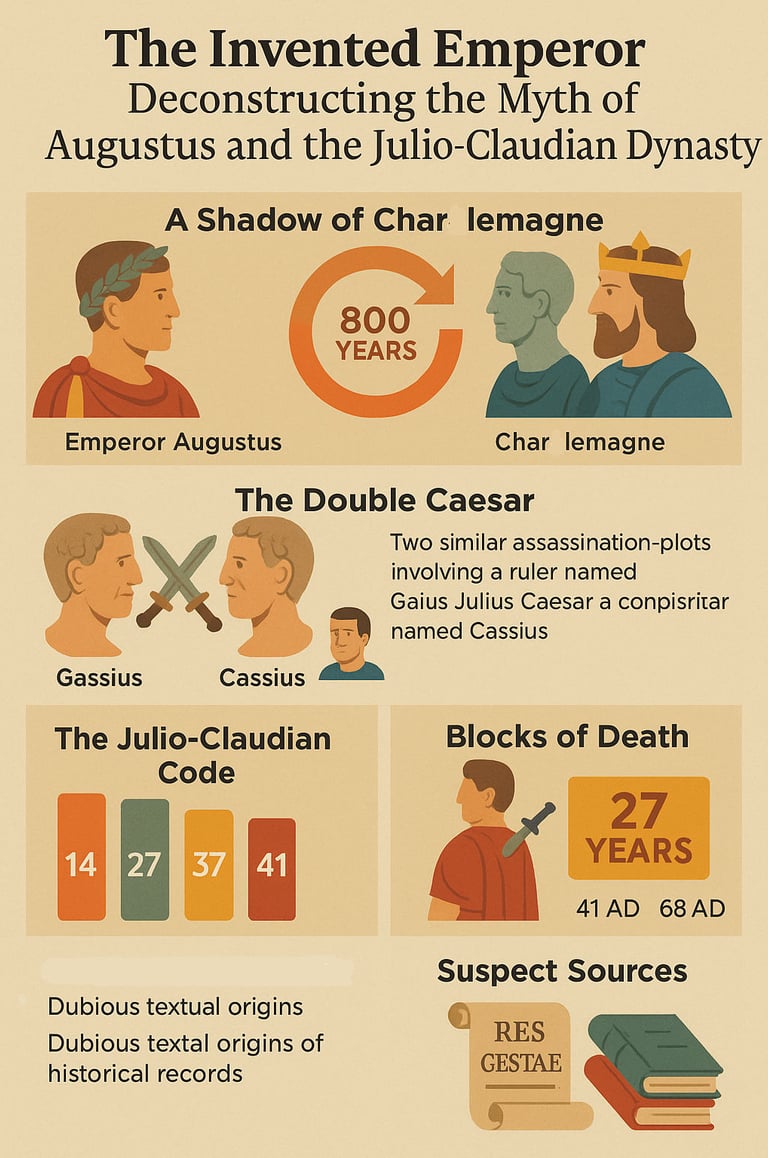Emperor Augustus: The 2000-Year-Old Myth
This article proves that the historical figure of Emperor Augustus and the entire Julio-Claudian dynasty are artificial constructs. Evidence presented includes an exact 800-year parallel between the lives of Augustus and Charlemagne, as well as the duplicated narrative of a "Gaius Julius Caesar" assassination. It further demonstrates that the emperors' reigns follow a numerical code (e.g., using numbers 14, 27, 37) and that the first century AD is structured into 27-year blocks, each ending with an emperor's murder. Finally, the article questions the authenticity of primary sources like Suetonius and the "Res gestae divi Augusti," "discovered" in the 16th century, bolstering the theory of a fabricated history.
CLASSICS
10/9/20254 min read


Emperor Augustus, the adopted son of Julius Caesar, is celebrated as the founder of the Roman Empire, a figure whose reign ushered in the Pax Romana—a golden age of peace and prosperity. His story, from his rise to power after Caesar's assassination to his long and stable rule, forms the very foundation of classical antiquity. But what if this cornerstone of ancient history is a 2000-year-old myth? What if the life of Augustus and the entire Julio-Claudian dynasty is not a factual record, but a brilliantly crafted historical fabrication?
A critical examination of the official narrative reveals a series of impossible parallels, numerical patterns, and suspicious textual origins that suggest "Emperor Augustus" and much of his era were meticulously invented.
Augustus: A Shadow of Charlemagne
The most compelling evidence of Augustus's fabricated nature comes from his astonishing parallels with a much later figure: Charlemagne. The core events of Augustus's life appear to be almost perfectly mirrored, exactly 800 years earlier, by those of Charlemagne.
This is not a mere coincidence but a "cross-cultural synchronization" often found in fabricated timelines. Key milestones—such as their ascension to supreme power, their administrative reforms, and even the consolidation of their empires—align with uncanny precision when shifted by an 800-year interval. This suggests that the story of Augustus was not a unique historical event, but a template, projected backward in time from a later, better-documented era.
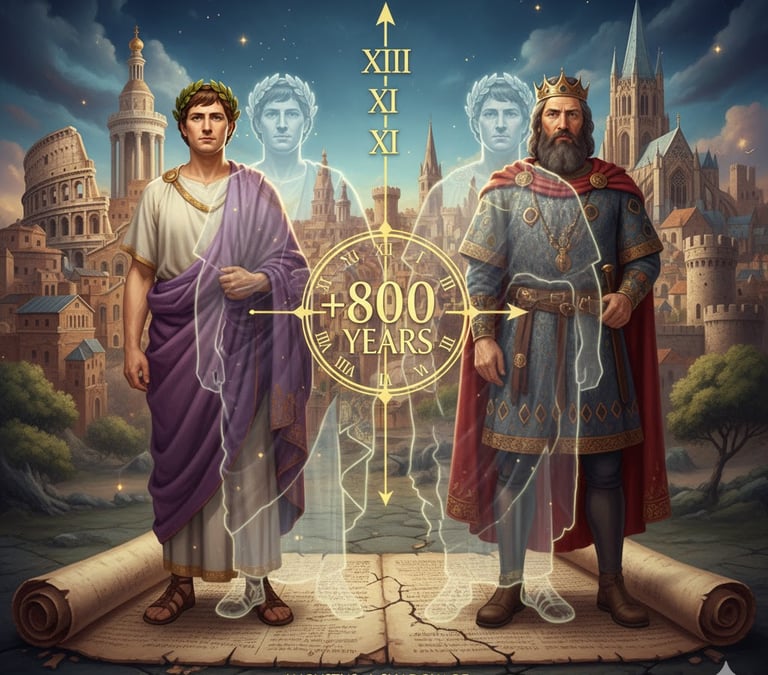

The Double Caesar: A Duplicated Assassination
Secondly, Roman history presents us with a stunning duplication of a key event: the assassination of a ruler named Gaius Julius Caesar. This event doesn't just happen once; it happens twice, with eerily similar details.
In 44 BC, the dictator Gaius Julius Caesar is famously assassinated. The plot is organized by a senator named Cassius, the weapon of choice is daggers, and the stated motive is the "Renewal of the Republic."
Decades later, the emperor known as Caligula—whose official name was also Gaius Julius Caesar—is assassinated in 41 AD. Once again, the murder is carried out with many daggers, the conspiracy is organized by an officer named Cassius, and the aftermath involves talk of a "Renewal of the Republic."
This is not simply a recurring theme; it is a near-perfect copy of a historical event, separated by less than 85 years.
Where does Augustus fit into this picture? Official history places him directly between these two identical events. More tellingly, upon his adoption by the first Caesar, Augustus also took the name Gaius Julius Caesar.
This means three men sharing the same name are central to two nearly identical assassination plots, with Augustus positioned exactly in the middle. This suggests that the narrative may have been artificially constructed around a single, real event that was later duplicated to create a more expansive timeline.
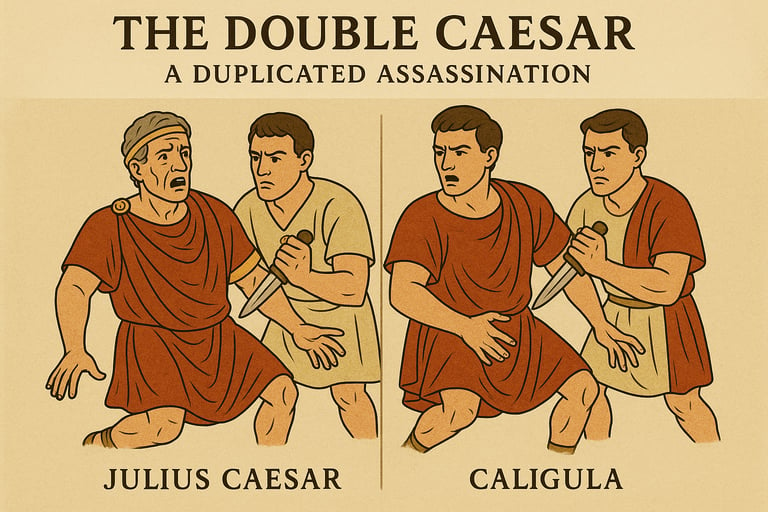

The Julio-Claudian Code: Reigns by the Numbers
The lifespans and reigns of the entire Julio-Claudian dynasty are far from random; they appear to be mathematically constructed. The author's research identifies a repeating code of specific numbers that dictates the durations of these imperial reigns.
Numbers such as 14, 27, 37, and 41 are repeatedly found structuring the lengths of imperial lives and periods of rule. This numerical precision suggests a deliberate, almost algorithmic, design rather than the unpredictable ebb and flow of historical reality. The dynasty's chronology seems to follow a pre-written script based on these recurring values.
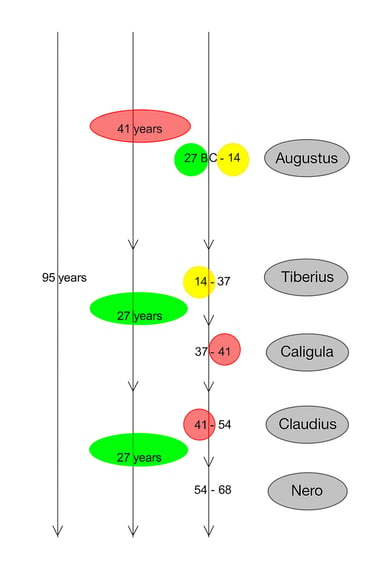

Blocks of Death: The 27-Year Cycle
Further evidence of a programmed timeline emerges in the first century AD itself. This period is structured in repeating blocks of exactly 27 years, each block conspicuously culminating in the violent death of an emperor by dagger.
Caligula was murdered by dagger in 41 AD.
Nero died a violent death by dagger (described as forced suicide or implied murder) in 68 AD (68 - 41 = 27 years).
Domitian was murdered by dagger in 96 AD (96 - 69 = 27 years).
This pattern of emperors dying violently, specifically by dagger, at such precise 27-year intervals is statistically impossible in an authentic historical sequence. It functions as a grim, repeating "end-of-block" marker in a constructed chronology.


Suspect Sources: The "Discovery" of Augustus
The very textual foundation of this period is also highly suspect. Suetonius, often cited as a primary source for the lives of the Caesars, appears to be describing a fabricated history rather than recording genuine events. His detailed biographies often read like moralizing tales or historical romances, perfectly fitting the constructed narrative.
Perhaps the most damning evidence comes from Augustus's own supposed autobiography, the famous "Res gestae divi Augusti" ("The Deeds of the Divine Augustus"). This crucial text was not widely known or genuinely preserved from antiquity. Instead, it was "conveniently discovered" in the 16th century—at a time when Emperor Charles V was seeking to establish his own imperial legitimacy by connecting himself to a glorious Roman past. The timing of this "discovery" raises significant questions about its authenticity and its role in buttressing a fabricated ancient timeline.
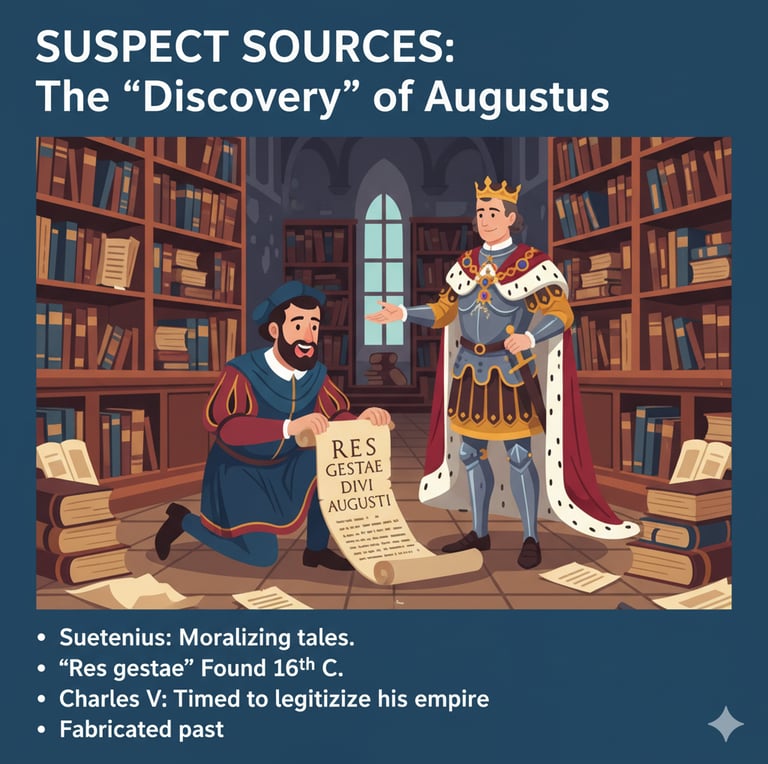

Conclusion: The Grand Illusion
The accumulated evidence—the 800-year synchronization with Charlemagne, the duplicated Caesar assassinations, the numerical code structuring imperial reigns, the repeating 27-year blocks ending in murder, and the suspicious origins of key historical texts—paints a clear picture. Emperor Augustus and the Julio-Claudian dynasty, as we know them, are likely an elaborate historical myth. They represent a grand illusion, meticulously crafted centuries later to provide a glorious, foundational past for European empires, effectively creating "the man who never was" at the dawn of the Roman Empire.
